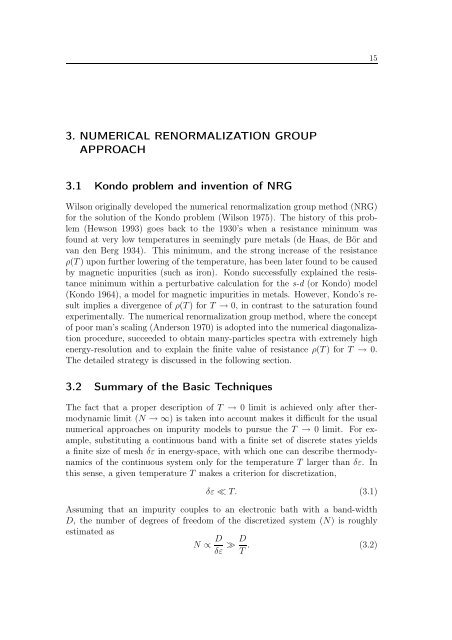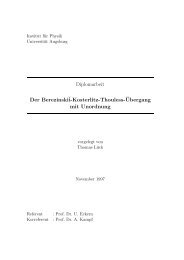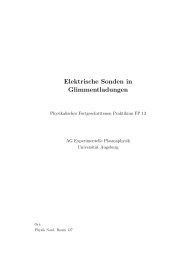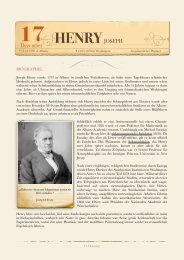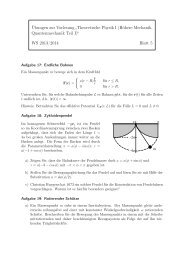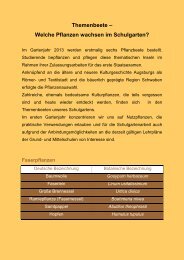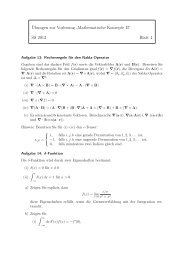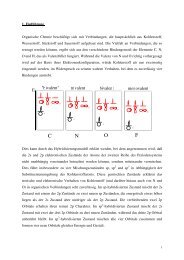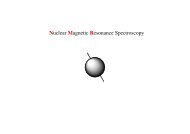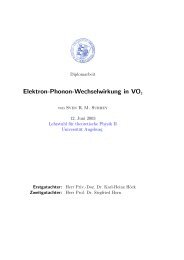Numerical Renormalization Group Calculations for Impurity ...
Numerical Renormalization Group Calculations for Impurity ...
Numerical Renormalization Group Calculations for Impurity ...
Create successful ePaper yourself
Turn your PDF publications into a flip-book with our unique Google optimized e-Paper software.
15<br />
3. NUMERICAL RENORMALIZATION GROUP<br />
APPROACH<br />
3.1 Kondo problem and invention of NRG<br />
Wilson originally developed the numerical renormalization group method (NRG)<br />
<strong>for</strong> the solution of the Kondo problem (Wilson 1975). The history of this problem<br />
(Hewson 1993) goes back to the 1930’s when a resistance minimum was<br />
found at very low temperatures in seemingly pure metals (de Haas, de Bör and<br />
van den Berg 1934). This minimum, and the strong increase of the resistance<br />
ρ(T) upon further lowering of the temperature, has been later found to be caused<br />
by magnetic impurities (such as iron). Kondo successfully explained the resistance<br />
minimum within a perturbative calculation <strong>for</strong> the s-d (or Kondo) model<br />
(Kondo 1964), a model <strong>for</strong> magnetic impurities in metals. However, Kondo’s result<br />
implies a divergence of ρ(T) <strong>for</strong> T → 0, in contrast to the saturation found<br />
experimentally. The numerical renormalization group method, where the concept<br />
of poor man’s scaling (Anderson 1970) is adopted into the numerical diagonalization<br />
procedure, succeeded to obtain many-particles spectra with extremely high<br />
energy-resolution and to explain the finite value of resistance ρ(T) <strong>for</strong> T → 0.<br />
The detailed strategy is discussed in the following section.<br />
3.2 Summary of the Basic Techniques<br />
The fact that a proper description of T → 0 limit is achieved only after thermodynamic<br />
limit (N → ∞) is taken into account makes it difficult <strong>for</strong> the usual<br />
numerical approaches on impurity models to pursue the T → 0 limit. For example,<br />
substituting a continuous band with a finite set of discrete states yields<br />
a finite size of mesh δε in energy-space, with which one can describe thermodynamics<br />
of the continuous system only <strong>for</strong> the temperature T larger than δε. In<br />
this sense, a given temperature T makes a criterion <strong>for</strong> discretization,<br />
δε ≪ T. (3.1)<br />
Assuming that an impurity couples to an electronic bath with a band-width<br />
D, the number of degrees of freedom of the discretized system (N) is roughly<br />
estimated as<br />
N ∝ D δε ≫ D T . (3.2)


